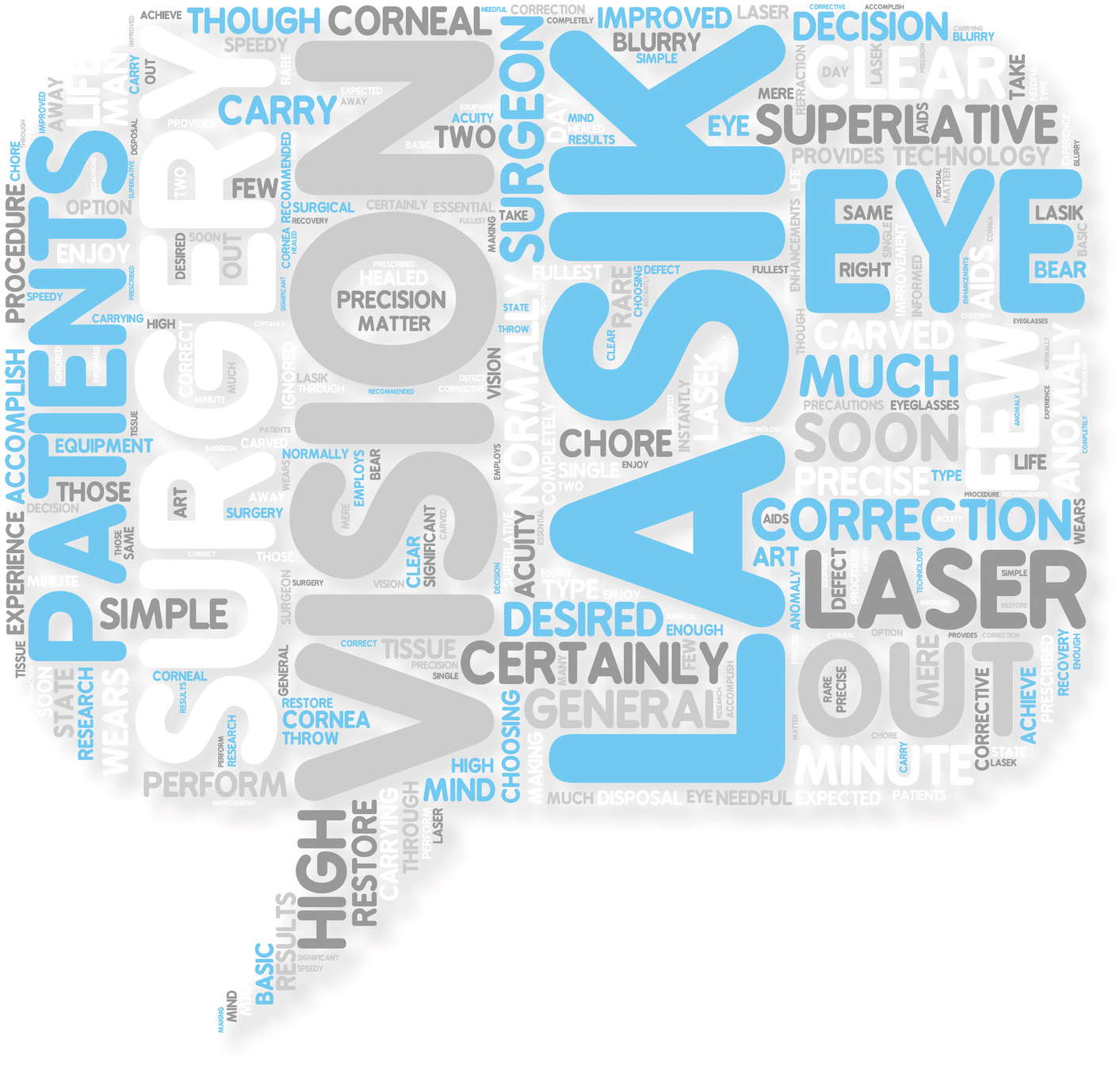More than 12 million people have undergone LASIK eye surgery it first received FDA approval in 1995. With a success rate of over 95%, LASIK is one of the safest and most common elective procedures in the United States.
Despite its high success rate, many people still hesitate to undergo LASIK. Although advances in laser eye technology have reduced the risk of complications from LASIK, many people worry about the procedure itself, particularly the pain associated with it. This concern is understandable – after all, a laser is cutting your eye. Indeed, one of the most common questions ophthalmologists receive about LASIK eye surgery is, “Does it hurt?”
Below, we’ll answer this and other frequently asked questions. Here are five things you should know if you are considering LASIK surgery:
1. LASIK is a relatively quick and risk-free procedure.
LASIK, which stands for laser-assisted in-situ keratomileusis, is a refractive surgery used to correct nearsightedness, farsightedness, and astigmatisms. The surgery takes approximately 10-15 minutes per eye and most patients notice significant vision improvement the very same day.
During the procedure, your ophthalmologist will a keratome or a laser to cut a small flap into the outer layer of your cornea. The flap is then peeled back and a laser is used to reshape the corneal tissue underneath. Finally, the flap is folded back over into its original position in order to heal. Stitches are not required, but patients may be instructed to use an eye patch for a few days following surgery.
2. Patients are conscious during surgery but feel no pain.
Yes, you’ve read that correctly: Patients are awake and aware during LASIK.
If you’re squeamish, don’t let this scare you off. It sounds worse than it is. LASIK is relatively pain-free. Before cutting into the cornea, your ophthalmologist will apply anesthetic drops to the eye to completely numb the area. Patients who are anxious about the surgery may also be given a sedative to calm their nerves. During the procedure, patients may feel pressure or suction near the eye, but these sensations are painless.
3. Many people experience slight to moderate discomfort immediately after undergoing LASIK.
Many patients report feeling dryness, itching, or burning sensations in one or both eyes immediately after LASIK eye surgery. Fortunately, these side effects usually improve and disappear in the days following the procedure.
However, if these symptoms are severe and/or worsening, it is imperative that you schedule an exam with your eye doctor immediately as this could be a sign of a more serious complication, including infection or movement of the corneal flap. If untreated, these conditions could lead to long-term vision damage or loss.
4. There are steps you can take to facilitate your recovery.
After the procedure, your ophthalmologist will provide you with instructions for post-operative care. As with any surgery, following your doctor’s directions for at-home care is vital to ensuring a quick and safe recovery. Instructions are fairly straightforward and include:
- Using eye drops and eye patches as directed by your eye doctor
- Not rubbing your eyes
- Refraining from using contact lenses earlier than instructed
- Avoiding all contact sports, pools, and hot tubs
- Attending all of your follow-up appointments
5. LASIK is not 100% effective for everyone.
Although it has a success rate between 92-98%, LASIK is not without its risks. Most patients notice significant improvement in their vision very soon after the surgery, but for others it may take up to six months for their vision to stabilize. During this period, patients might experience blurriness, light sensitivity, and other fluctuations in their vision.
Furthermore, LASIK is not guaranteed to give everyone perfect vision. Many people still use their glasses or contacts for certain activities, and some require additional surgeries to further correct their vision. A small number of people report having worse vision after LASIK than before, especially at night. Halos, starbursts, glares, and double vision are other possible long-term side effects of LASIK.
Fortunately, the development and incorporation of wavefront-guided technology has personalized LASIK more than ever before. Wavefront-guided systems use lasers to create a three-dimensional map of the patient’s eye. Using this map, incisions are adjusted to the thickness and shape of each patient’s cornea, giving patients a truly customized procedure while minimizing many of short- and long-term side effects associated with LASIK. Additionally, wave-front guided systems have been said to provide patients with a more relaxed and comfortable experience.
If you are considering LASIK but worry about the risk of painful side effects during and after the surgery, fear not. The development of laser eye technology continues to make LASIK a safer, more comfortable experience for everyone. For more information, consult your eye care specialist at OCLI.
